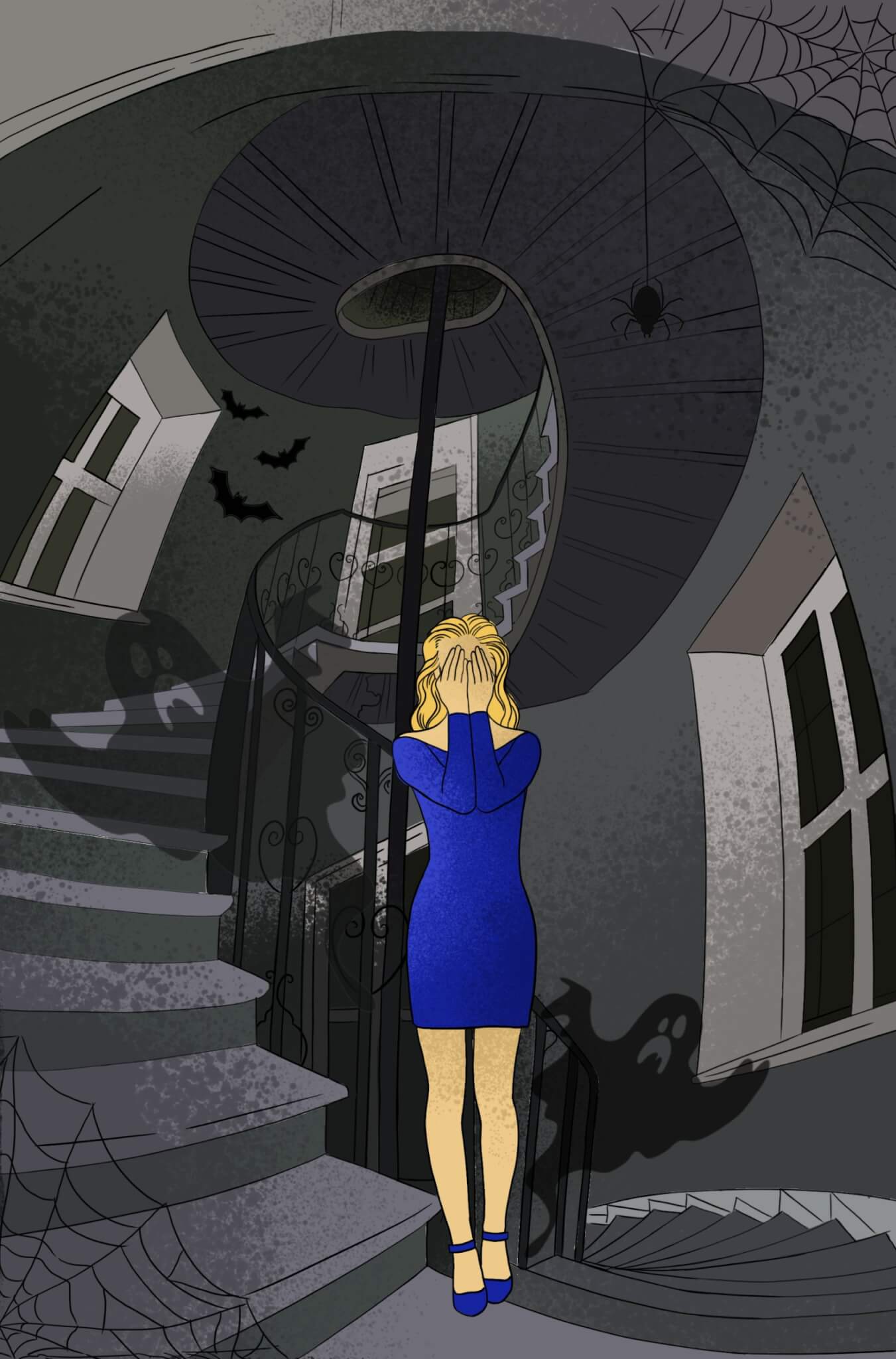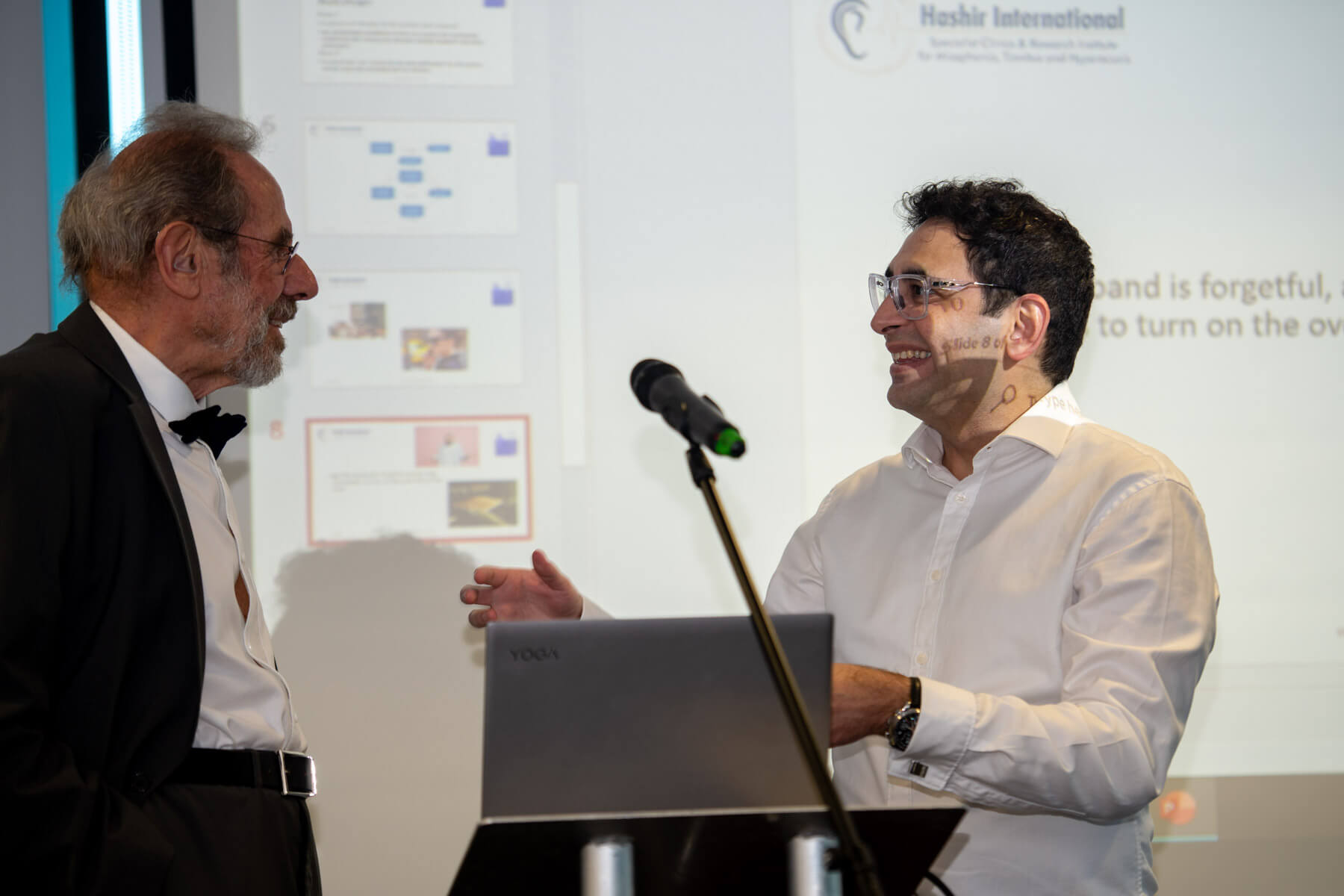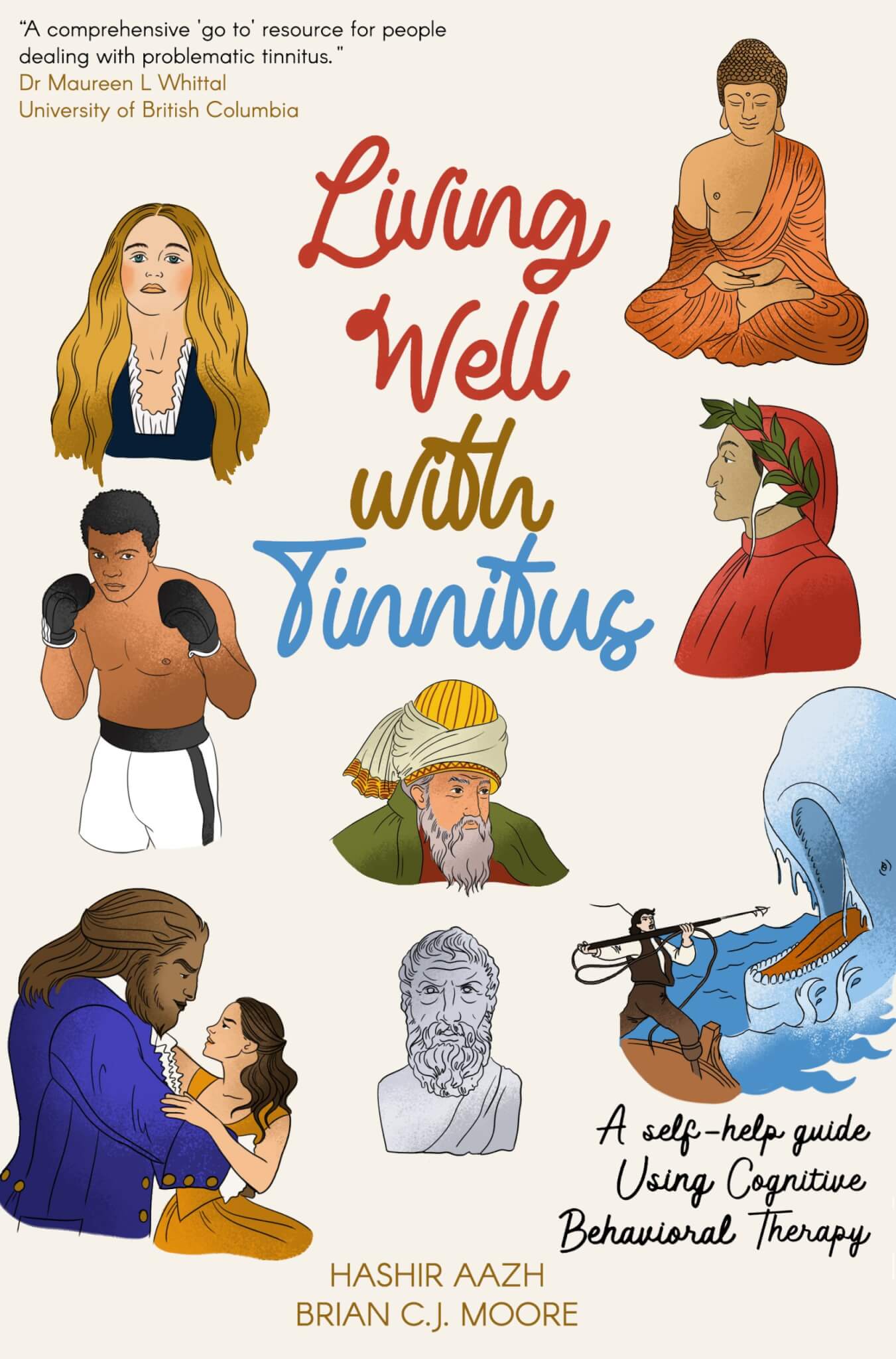 Dark Spooky House (DSH) is a thought experiment designed to help us understand how our emotions and bodily sensations can be misinterpreted by our brain leading further anxiety and tinnitus distress. We often interpret our negative emotions as alarm signals. If we feel anxious, we may believe that we are in danger. If we feel angry, we may think that someone must have done something wrong. This hampers the process of accepting the negative emotions. The DSH thought experiment can help us to challenge this type of emotional reasoning with regard to tinnitus. Sometimes children are afraid of dark rooms. This can also be the case for adults. Imagine that you are trapped in an old dark spooky house and you feel very frightened. You cannot see anything clearly and perhaps you are afraid of some supernatural menace. Because you feel frightened, you experience bodily sensations related to anxiety and panic, and these may make you think that you are in immediate danger. But you may, in fact, be perfectly safe; there is no rational basis for believing that you are in immediate danger. Now imagine that before being trapped in this dark spooky house you had watched a horror movie about a haunted house. Would that make you feel more scared? And would it actually increase the danger? Most people would say that watching the film would make you more scared but you would not actually be in more danger. So, if you are not in more danger why would you feel more scared? Most people agree that feeling scared in this scenario does not mean that you are in danger. You are scared because of your thoughts, and your thoughts are influenced by your past experiences, your personality, your physical and mental health, and your environment. To accept the negative emotions, you can tell yourself that feelings do not necessarily reflect reality. If I feel anxious this doesn’t mean that I cannot cope with tinnitus.
Dark Spooky House (DSH) is a thought experiment designed to help us understand how our emotions and bodily sensations can be misinterpreted by our brain leading further anxiety and tinnitus distress. We often interpret our negative emotions as alarm signals. If we feel anxious, we may believe that we are in danger. If we feel angry, we may think that someone must have done something wrong. This hampers the process of accepting the negative emotions. The DSH thought experiment can help us to challenge this type of emotional reasoning with regard to tinnitus. Sometimes children are afraid of dark rooms. This can also be the case for adults. Imagine that you are trapped in an old dark spooky house and you feel very frightened. You cannot see anything clearly and perhaps you are afraid of some supernatural menace. Because you feel frightened, you experience bodily sensations related to anxiety and panic, and these may make you think that you are in immediate danger. But you may, in fact, be perfectly safe; there is no rational basis for believing that you are in immediate danger. Now imagine that before being trapped in this dark spooky house you had watched a horror movie about a haunted house. Would that make you feel more scared? And would it actually increase the danger? Most people would say that watching the film would make you more scared but you would not actually be in more danger. So, if you are not in more danger why would you feel more scared? Most people agree that feeling scared in this scenario does not mean that you are in danger. You are scared because of your thoughts, and your thoughts are influenced by your past experiences, your personality, your physical and mental health, and your environment. To accept the negative emotions, you can tell yourself that feelings do not necessarily reflect reality. If I feel anxious this doesn’t mean that I cannot cope with tinnitus.

This is part of Dr Hashir Aazh and Professor Brian C.J. Moore on 10 step self help tool for tinnitus. World-wide, about one billion people experience tinnitus at some point in their life. Tinnitus is a life-changing experience for many of them. Learning effective management strategies in a timely fashion is the key to dealing with tinnitus-related distress. The main aim of their self-help programme book is to teach a person with tinnitus how to reduce the distress caused by their tinnitus.

Hashir Aazh and Brian C.J. Moore bring together their complementary experiences. Hashir is an academic-clinician who pioneered audiologist-delivered cognitive behavioural therapy (CBT) for tinnitus and Brian is a professor who is one of the world’s leading scientists in human hearing and its disorders. In creating this ten-step self-help guide, they combine cutting-edge knowledge of the auditory science and theoretical frameworks in modern psychology with the insight they have acquired from clinical encounters about the complexities of the human experience of tinnitus and how to help people to deal with it. But that’s not all! Aazh and Moore’s unique style of writing teaches us complex concepts in an entertaining manner. The book introduces a cast of characters from Beauty and the Beast to Moby Dick, from Dante to Sigmund Freud, from Buddha to Avicenna, and from Muhammad Ali to the Little Prince. Packed with metaphors and practical tips, the authors draw a realistic picture of what the recovery from tinnitus-related distress looks like, and then dive into the deep and explore the variety of experiences of tinnitus and their complexities. The reader will learn how important it is to go beyond the difficulties and annoyance caused by tinnitus and to pay attention to the meanings behind these experiences and understand the role they play in escalating tinnitus-related distress. Of course, consistent with the main aim of the self-help, learning about the meaning behind experiences of tinnitus paves the way for developing the skills that can help in the journey of recovery. Everything that you need to know about self-management of tinnitus is presented in ten steps!

Get the book version here.